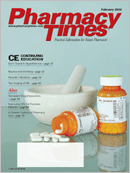Publication
Article
Pharmacy Times
Making Computerized Screening Work for You
Although computerized drug interactionscreening has been an importantpart of prescription order processing formany years, several limitations havebeen noted.1 Foremost among theseproblems is "alert fatigue,"which occurswhen practitioners are inundated withdrug interaction alerts that they believeto be trivial or inappropriate for theirpatients.
Alerts that do not contribute to thecare of the patient may result from anumber of causes, including patients nolonger taking one of the drugs, patientsstabilized on the drug combination, obviouspharmacodynamic interactions, orthe choice of a drug combinationbecause of the potential interactionbetween the drugs. These inappropriatealerts lead to the disregard of nearly allalerts, including those that may beimportant to ensure patient safety.2
An all too common response to theperceived excess alerting is to limit thenumber of drug interactions the screeningprogram uses as it reviews patientprofiles. Shutting off whole groups ofpotential interactions often is used tolimit the number of interaction alertsgenerated by the software.
Most drug interaction screening programsallow users to select one or moresignificant classes of interactions forinclusion in the automated screening.Thus, several significant classes are eliminatedfrom the screening process.
There is a risk that elimination oflower-significance interactions will missimportant interactions. In a study ofpotential drug interactions with transplantmedications, for example, it wasnoted that, if the software was set toalert for only contraindicated pairs, 90%of clinically significant interactions wouldbe missed.3 When pharmacists limit theirdrug interaction software to a subset ofthe total database, they are assumingthat none of the ignored interactions willcause an adverse outcome in a patient.
If a pharmacy elects to disable alertsfor one or more classes of interactions,the pharmacists must be sure to reviewthe list of interactions that will no longertrigger alerts. They may find clinically significantinteractions that have been designatedin the database as having limitedsignificance.
The pharmacists should keep inmind that interactions are classifiedbased on the rules used by the developersof the software. They must becertain that they know exactly whatrules were used to classify the interactionsin the software they are using.For instance, some interactions mayhave had their classification downgradeddue to limited documentation. Theinteractions that are in the disabledclasses will not be used in the screeningof some patients' drug regimens. Ifthese interactions are based on knownmechanisms, however, they may bejust as risky to patients as interactionsthat have been more thoroughly documented.
The authors have recently beenworking with drug interaction softwareto reclassify individual drug interactions.This reclassification involves areview of each interaction and considerationof its potential to cause patientharm based on a set of establishedrules. The ability to modify software inthis manner is a newly offered featurethat should be adopted by all providersof drug interaction screening software.Each interaction can be reclassifiedwithout concern that some interactionswill be inadvertently removedfrom active search. Drugs that havebeen removed from the market or arenot available in a health care system'sformulary can be deleted.
Although many users may not want toinvest the time necessary to review thethousands of interactions in the databaseor may not have the expertise to evaluateeach interaction, the ability to have thereview done is an important step in makingdrug interaction screening softwaremore flexible. Drug interaction softwarecould be made even more flexible byadditional customization by users.
Computerized drug interaction screeningprograms provide important assistancein ensuring safe medication dispensingand use. As the software evolvesto enable site-and perhaps patient-specificchanges, pharmacists will be able tocustomize the software to best fit theirpractice needs. Customization should beattempted only by those with expertisein drug interactions and with careful considerationof the consequences likely toresult from software changes.
Drs. Horn and Hansten are both professorsof pharmacy at the Universityof Washington School of Pharmacy.For an electronic version of this article,including references if any, visitwww.hanstenandhorn.com.
For a list of references, send astamped, self-addressed envelope to:References Department, Attn. A. Stahl,Pharmacy Times, 241 Forsgate Drive,Jamesburg, NJ 08831; or send an e-mailrequest to: astahl@ascendmedia.com.







